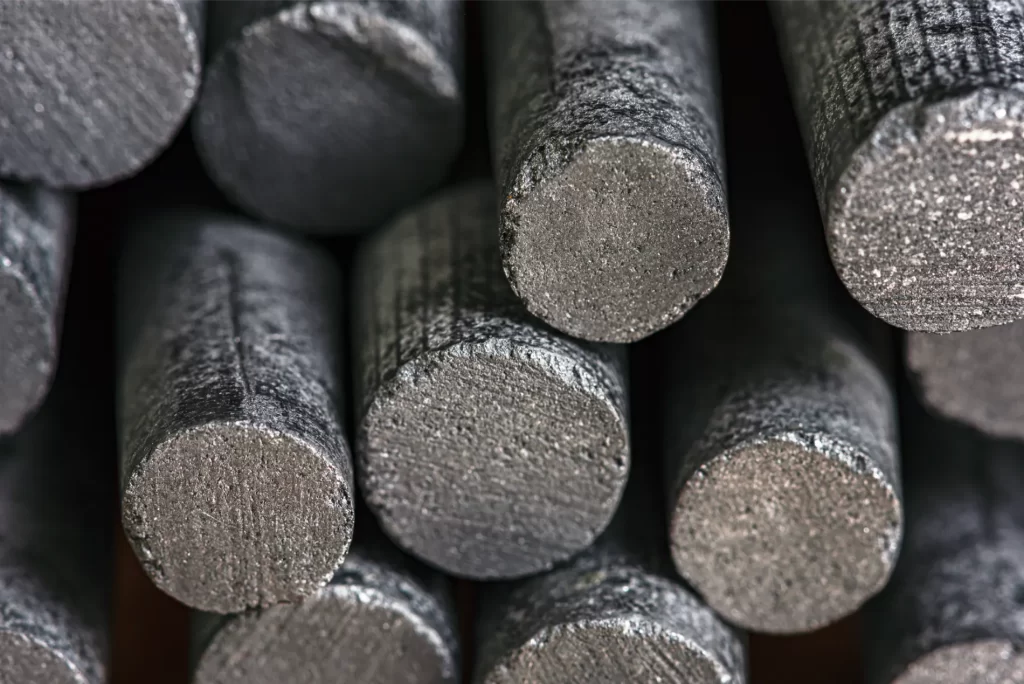Synthetic vs. Natural Graphite: What’s the Difference?
Graphite is one of the most versatile industrial materials in the world, known for its high-temperature resistance, excellent conductivity, and exceptional lubricity. But not all graphite is created equal. When selecting graphite for manufacturing, machining, or engineering purposes, one of the most important decisions you’ll make is whether to use synthetic or natural graphite.
In the following text we’ll break down the key differences between the two types of graphite: how they’re sourced, how they perform, and which applications they’re best suited for, allowing you to make an informed decision about what’s right for your project.
What Is Graphite?
Graphite is a crystalline form of carbon where the atoms are arranged in a layered structure. This specific configuration gives graphite its unique combination of thermal resistance, electrical conductivity, chemical stability, and lubricating properties. It’s a widely used material in industries ranging from aerospace to electronics. Its performance can vary greatly depending on whether the graphite is natural or synthetic.

Natural Graphite: Formation & Characteristics
Natural graphite is a mined material that forms deep underground in metamorphic rock via the transformation of carbon-rich materials. It is extracted from deposits found in countries such as China, Canada, Brazil, and Sri Lanka.
There are three primary forms of natural graphite:
- Flake graphite – the most common type, used in batteries and lubricants
- Amorphous graphite – fine-grained and often used in brake linings and refractories
- Vein (or lump) graphite – rare, with higher purity, typically found in Sri Lanka
Properties of Natural Graphite:
- Naturally occurring – No industrial manufacturing required
- Moderate to high carbon content – But less consistent than synthetic grades
- Variable particle and grain size – Depending on the deposit and processing
- Lower mechanical strength and purity – Compared to synthetic alternatives
Common Applications:
- Refractory bricks and linings for steelmaking
- Foundry facings and lubricants
- Pencil leads and carbon brushes
- Anode material in some lithium-ion batteries
Synthetic Graphite: Manufacturing & Characteristics
Unlike naturally occurring graphite, synthetic graphite is man-made through controlled, high-temperature processes. It begins with petroleum coke or pitch coke (a byproduct similar to coal), which is shaped and then heat-treated at temperatures exceeding 5400°F in a furnace. The intense heat transforms the carbon-based product into synthetic graphite with superior properties.
There are several types of synthetic graphite based on how it’s formed:
- Isostatic graphite – isostatically molded, fine grain, uniform structure, with consistent properties throughout billet
- Molded graphite – made by pressing material into a shape
- Extruded graphite – extruded through a die with distinct grain direction and properties
Properties of Synthetic Graphite:
- Ultra-high purity – Often above 99% carbon
- Tightly controlled grain size and density – Ideal for consistent machining
- Excellent thermal and electrical conductivity
- Superior strength and resistance to thermal shock
Common Applications:
- Semiconductor and solar manufacturing tools
- Graphite molds and dies for casting
- Aerospace components exposed to high heat
- Electrodes for electric arc furnaces in steel production
- Electrical discharge machining (EDM) electrodes
Key Differences: A Side-by-Side Comparison
| Property | Natural Graphite | Synthetic Graphite |
|---|---|---|
| Source | Mined from natural deposits | Manufactured from petroleum coke |
| Purity | Varies, lower | Ultra-high, consistent |
| Grain Size | Inconsistent | Uniform |
| Strength | Lower | Higher |
| Thermal Stability | Moderate | Excellent |
| Cost | Lower cost | Higher cost due to processing |
| Applications | Lubricants, refractories, batteries | EDM, aerospace, semiconductors |
While natural graphite may be more cost-effective for large applications or where ultra-high precision isn’t required, synthetic graphite is the top choice for environments where performance, purity, and consistency are of the utmost importance.
How to Choose the Right Graphite for Your Application
Choosing between synthetic and natural graphite depends on your specific project. Here are some key factors to consider:
- Operating Temperature – Synthetic graphite handles extreme heat better.
- Precision Requirements – Synthetic graphite is easily tailored to meet design criteria.
- Mechanical Stress – Synthetic graphite’s structure provides better strength and durability.
- Budget Constraints – Natural graphite is more affordable for general-purpose use.
At Weaver Industries, we specialize in advanced graphite machining, with a particular focus utilizing the correct type of graphite for your project. Our team has decades of experience guiding customers through the material selection process, ensuring every part we machine performs to the highest standards.
Contact Weaver Industries to Start Your Project
Both synthetic and natural graphite have their place in industry. Natural graphite is a reliable, cost-effective option for certain bulk applications, while synthetic graphite offers unmatched purity, precision, and performance in the most demanding environments.
If you’re unsure which type of graphite is best for your application, our experts are here to help! At Weaver Industries, we offer engineering insight, in-house expertise, and cutting-edge machining capabilities to support your project from planning to production.
Ready to explore custom graphite solutions? Contact us today to get started.





